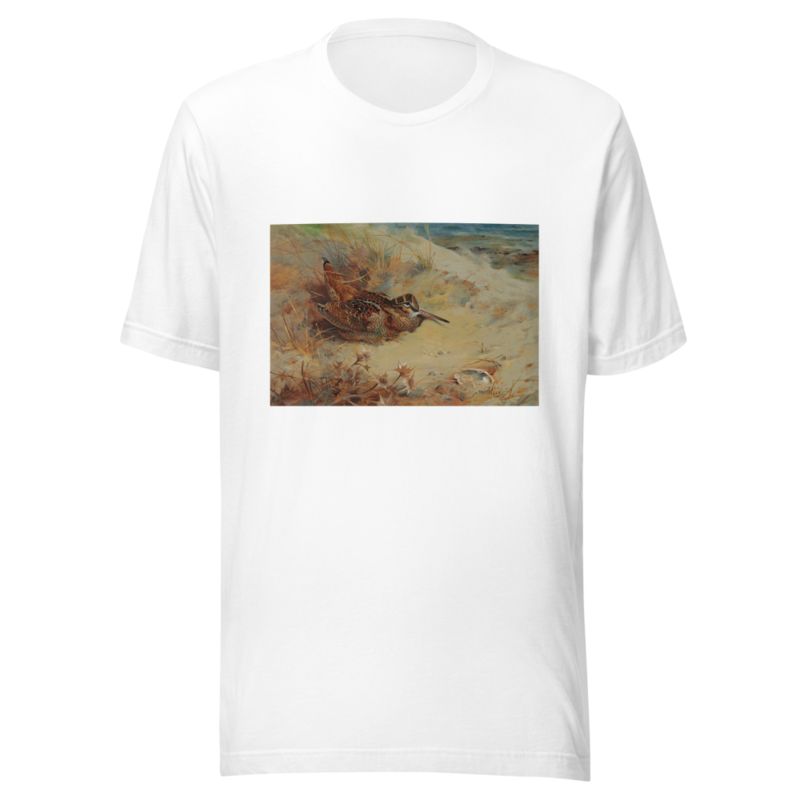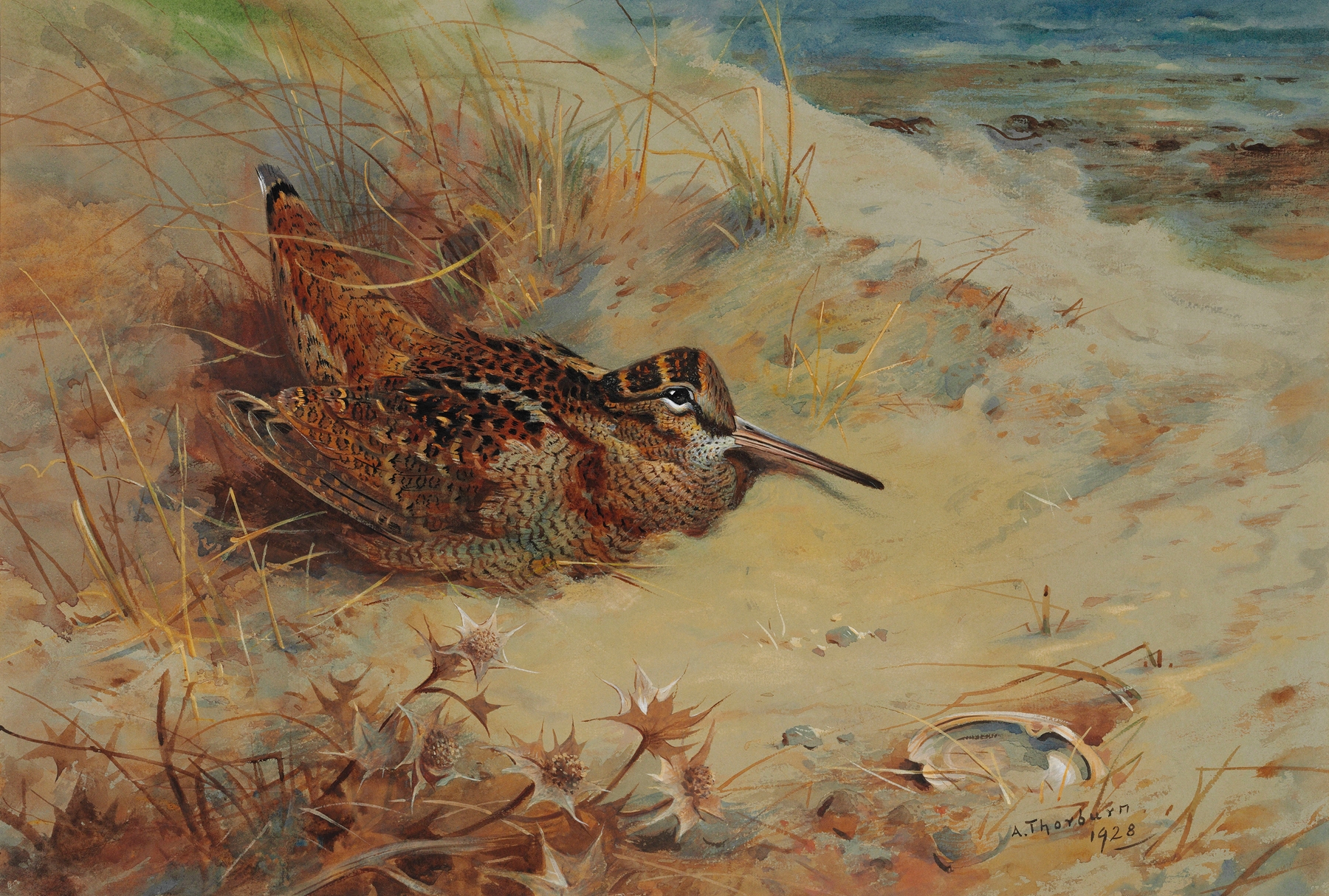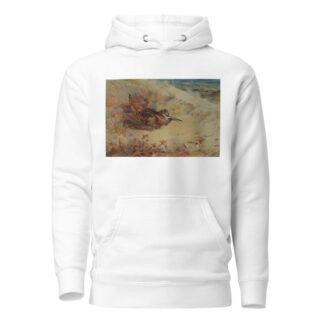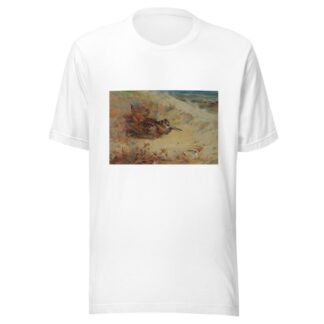Description
Woodcock sheltering in the sand dunes by Archibald Thorburn printed on a T-Shirt
About the T-Shirt
Regular fit
Standard length, the fabric easily gives into movement
Casual wear
A classic, everyday option loved by our customers
Side-seamed
Constructed by sewing two parts together, creating a fitted look
The Unisex Staple T-Shirt feels soft and light with just the right amount of stretch. It’s comfortable and flattering for all. We can’t compliment this shirt enough–it’s one of our crowd favorites, and it’s sure to be your next favorite too!
- Solid colors are 100% Airlume combed and ring-spun cotton
- Ash color is 99% combed and ring-spun cotton, 1% polyester
- Heather colors are 52% combed and ring-spun cotton, 48% polyester
- Athletic and Black Heather are 90% combed and ring-spun cotton, 10% polyester
- Heather Prism colors are 99% combed and ring-spun cotton, 1% polyester
- Fabric weight: 4.2 oz./yd.² (142 g/m²)
- Pre-shrunk fabric
- 30 singles
- Side-seamed construction
- Tear-away label
- Shoulder-to-shoulder taping
- Blank product sourced from Nicaragua, Mexico, Honduras, or the US
Archibald Thorburn (1860-1935)
Archibald Thorburn was a Scottish artist that specialised in wildlife, painting mostly in watercolour. He regularly visited Scotland to sketch birds in the wild, his favourite haunt being the Forest of Gaick near Kingussie in Invernesshire. His widely reproduced images of British wildlife, with their evocative and dramatic backgrounds, are enjoyed as much today as they were by naturalists a century ago.
Archibald was born at Viewfield House, Lasswade, Midlothian, the fifth son of Robert Thorburn (1818–1885), portrait miniaturist to Queen Victoria. His first education was at Dalkeith and in Edinburgh, after which he was sent to the newly founded St John’s Wood School of Art in London. His stay there was only brief, since on the death of his father he sought the guidance of Joseph Wolf. It was his commission in 1887 to illustrate Lord Lilford’s Coloured Figures of the Birds of the British Isles, for which he painted some 268 watercolours, that established his reputation. He illustrated numerous sporting and natural history books, including his own. He taught Otto Murray Dixon and Philip Rickman (both in Nature in Art’s collection), and he encouraged the young Donald Watson when he came to visit him in Dumfries and Galloway. Thorburn was friends of other eminent bird illustrators including George Edward Lodge and John Guille Millais with whom he collaborated on a number of works including: Natural History of British Feeding Ducks; British Diving Ducks and British Game Birds.
On his marriage to Constance Mudie, Thorburn moved to High Leybourne in Hascombe in 1902, where he was to spend the rest of his life. In the 1930s he refused to make use of electric lighting, preferring natural light for his painting, and making use of lamps and candles. His grave is at St John the Baptist church in Busbridge, Godalming.






Reviews
There are no reviews yet.